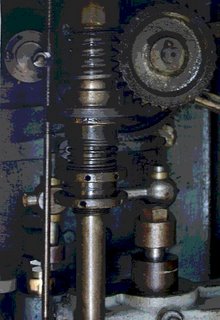 I was just introduced to an articulate, fascinating man whose primary work is “business development.” What does that term mean? I asked. When his comments were boiled down, his view of business development involved some very detailed work on healthcare information technologies: IT.
I was just introduced to an articulate, fascinating man whose primary work is “business development.” What does that term mean? I asked. When his comments were boiled down, his view of business development involved some very detailed work on healthcare information technologies: IT.Our conversation wasn’t a dialogue. In that time and place, two people were talking about different things. He was all about features.
My POV was benefits – what’s the value of the technologies for the consumer (whoever the consumer might be: patients, doctors, nurses, medical administrators, hospital managers)? There was no common frame for us, black versus white. Business development (or IT, in this case) versus marketing.
Maybe you’ve confronted this challenge before. I have, in my work for some clients. It’s worth re-examining it right now. Anthony Huang, Chairman of Techxans, said in a recent e-mail, “As the Texas market is thriving once more, the demand for information technology resources are again on the rise.” That’s a little formal, statement-wise; but there is a growing level of IT activism (again) all over the country, fueled by new government regulations covering everything from corporate governance to doctors’ prescriptions.
The painful disconnects between IT deliverables and marketing are once again a hot topic – especially if you’re one of the companies (or agencies) suffering from them.
Fortunately for us (IT business developers and marketers), this is a path that’s already been explored. I want to refer you to an excellent article in CIO Magazine, by Lee Pender. Even though it appeared five years ago, in June of the Year 1, it is still relevant – and the cases it highlights are still apt.
Pender made some major points:
1. Gung ho salespeople make deals that IT can’t support. Marketing professionals want sexy new features installed on their companies’ web pages immediately. Companies lose deals because marketing's glossy image doesn't always accurately represent IT’s back-end capabilities. And IT professionals don’t always have the communication skills or clout in their company to withstand marketing’s demands.
2. As technology becomes more and more central to the operation of many companies, it is increasingly imperative that IT and marketing heal this longstanding rift.
3. The root of the problem is that CIOs and marketers have strikingly different job mandates and personalities. Marketers think about opportunities: raking in revenue with new accounts, promising new and more exciting services, dreaming up bold new images for the company. CIOs, by contrast, constantly deal with limitations: a nagging lack of IT resources, financial barriers to implementation of new systems, the frequent need to sacrifice exciting new projects in order to keep legacy systems up and running.
Pender included solutions-by-example, with stories from companies like Northrop Grumman, MCI and Thomson Multimedia. After five years, it’s more than likely that the people have changed jobs and the companies have certainly changed too.
The “how-to” of solving the IT development/marketing interface problem is just as valid here and now as it was in 2001.
“Oh,” you say, “our situation is completely different.” Is it? Are you (and I) condemned to repeat mistakes because we haven’t learned from our predecessors? I don’t think so.
IT can bring more pieces to the game than ever before. I suggest to clients that their IT people need to be involved with marketing plans; that Marketing people needs to talk with their IT departments to make sure they can deliver what we’re creating in terms of new sales channels; that we make a team effort out of the project. Everybody plays on the same board.
That way, “business development” is made whole – everybody benefits.








